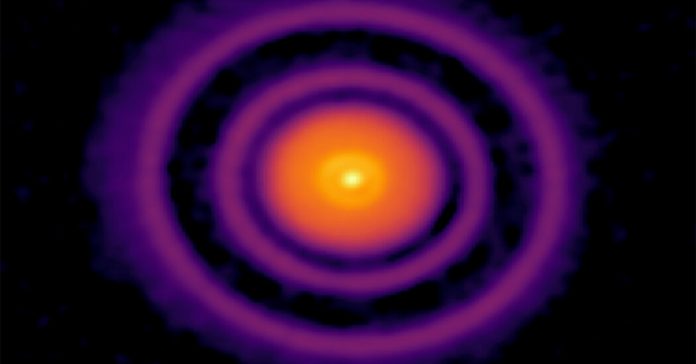Over the past 30 years, astronomers have discovered greater than 5,000 exoplanets, an eclectic menagerie of worlds removed from our stellar neighborhood. The most recent could also be a mere toddler.
Within the journal The Astrophysical Journal Letters, scientists on Tuesday introduced compelling proof for a world simply 1.5 million years outdated, making it one of many youngest planets ever discovered, maybe the youngest.
This world — 395 light-years from Earth within the constellation Ophiuchus — is so younger that its constructing blocks of gasoline and dirt are nonetheless coming collectively. This planet is a new child being cradled within the arms of its guardian star.
“It’s like taking a look at our personal previous,” stated Myriam Benisty, an astronomer on the Institute of Planetology and Astrophysics of Grenoble in France and a co-author of the research.
Because the suspected planet is shrouded by the matter that’s making it, additional telescopic observations shall be required to substantiate its existence. Presuming it isn’t rocky detritus masquerading as a planet, scientists can use it to raised perceive how worlds are made.
The torrent of newly found exoplanets has difficult or disproved longstanding theories of planet formation. However the location of this child planet — firmly throughout the disk of primordial matter round its star — helps the concept most planets spend a lot of their time rising up in an identical type of nursery.
The invention of the celestial pip suggests “all planetary programs have a standard formation course of,” stated Anders Johansen, an astronomer at Lund College in Sweden who was not concerned with the research. Regardless of the chaos of the cosmos, he stated, “there may be truly a number of order” in relation to crafting planets.
The crew of scientists used the Atacama Giant Millimeter/submillimeter Array (ALMA), a group of 66 antennas appearing in unison in Chile, to collect proof of this exceedingly younger world. Fuel and dirt orbits sure stars in so-called circumstellar disks. This materials, which clumps collectively to type planets inside these disks, emits radio waves that ALMA can detect.
Final yr, Dr. Benisty and her colleagues used ALMA to make the primary unambiguous detection of a halo of gasoline and dirt orbiting an exoplanet: a circumplanetary foundry nonetheless making the world it shrouded, and maybe just a few moons too.
For the most recent research, they pointed ALMA at AS 209, a star only a tad heavier than the solar. Simply 1.5 million years of age, it has solely just lately began to burn hydrogen — the stellar equal of a toddler uttering its first phrases.
AS 209’s circumstellar disk was discovered to have a number of gaps. And in a single such hole, ALMA detected the radio-wave signature of a planet-making tempest, gasoline that was presumably enveloping a Jupiter-like world nonetheless beneath building.
The planet’s exact age gained’t be resolved quickly, however it’s more likely to be similar to its nascent star. However its youth will not be the one factor piquing astronomers’ pursuits. It is usually bafflingly removed from its star. Neptune, the outermost planet in our photo voltaic system, is roughly 2.8 billion miles from the solar. This exoplanet is sort of 19 billion miles away from its personal star.
That raises questions on our personal neck of the woods.
The dimensions of the particles disk that solid Earth and the opposite planets is unsure. “Possibly the disc was solely barely bigger than Neptune’s orbit, and that’s the reason Neptune is the outermost planet,” Dr. Johansen stated. However maybe our hub of planet-making matter was extra like AS 209’s. In that case, “we additionally can’t rule out that our personal photo voltaic system has a planet past Neptune,” he stated — maybe the hypothesized Planet 9 that some astronomers suspect is lingering in distant darkness.
Within the coming days, the James Webb House Telescope will decide the mass of the planetary new child and research its atmospheric chemistry. And by portray an in depth portrait of one of many youngest worlds identified to science, these observations will inch us all nearer to answering the last word query, stated Jaehan Bae, an astronomer on the College of Florida and an creator of the research: “The place did we come from?”


